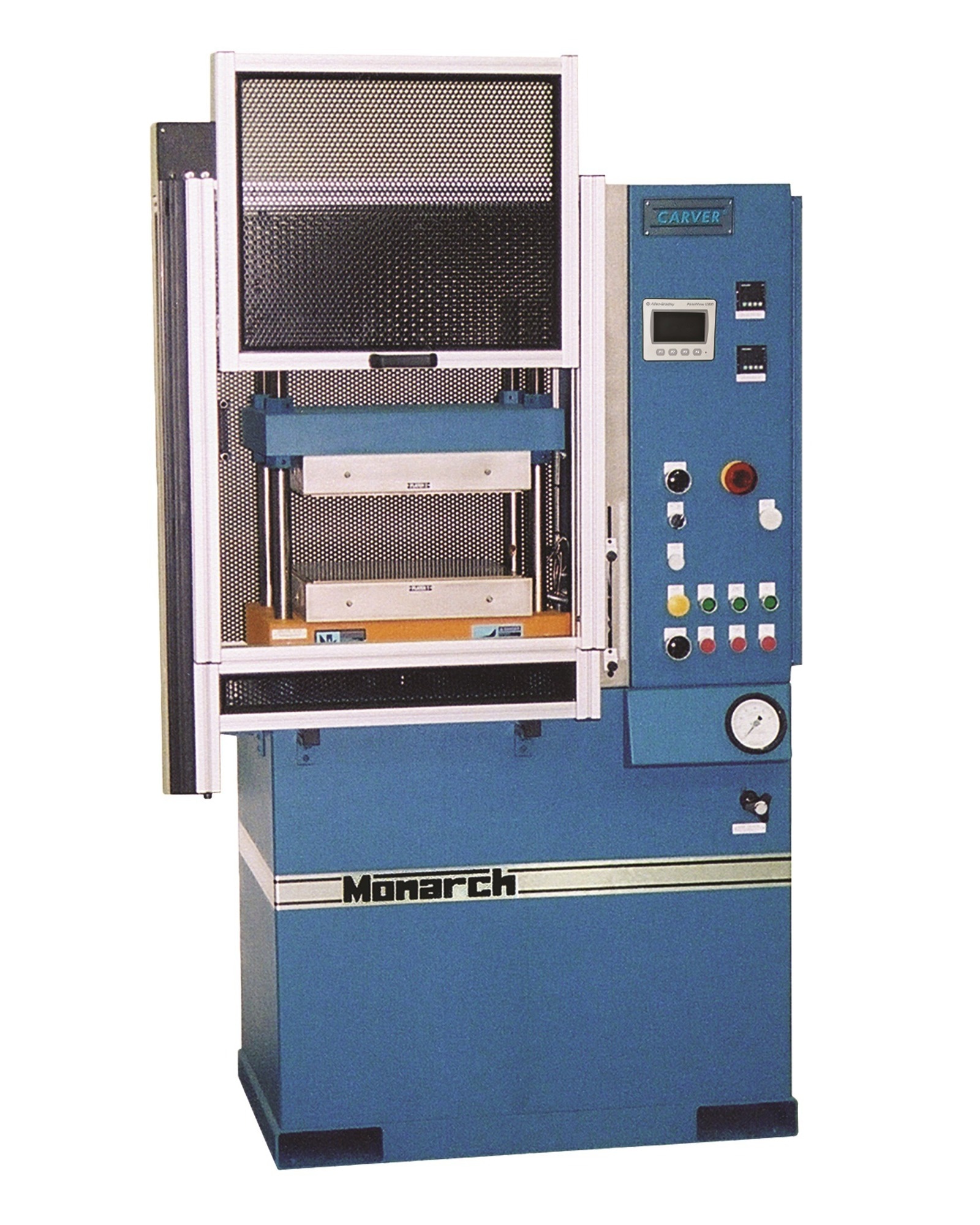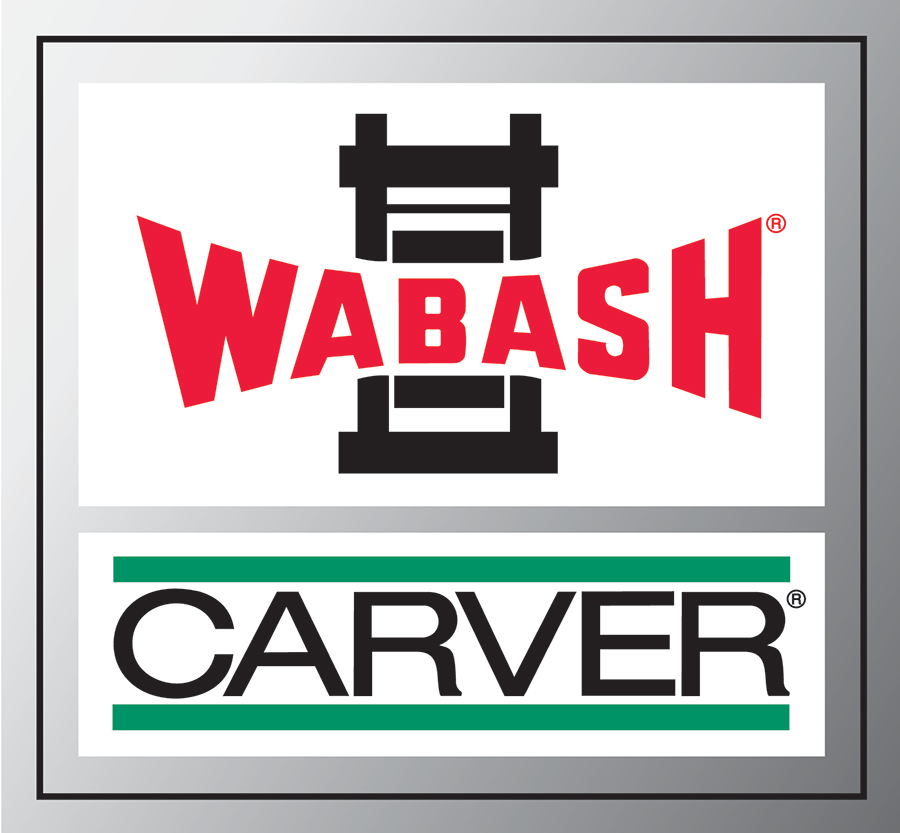Can you provide an overview of how hydrogen fuel cells work?
Hydrogen polymer electrolyte membrane (PEM) fuel cells use hydrogen and oxygen to produce electricity through an electrochemical reaction. Fuel cells consist of an anode, cathode, and electrolyte membrane.
What is their significance in the clean energy sector? How do they function as a clean energy alternative?
A hydrogen PEM fuel cell produces electricity without combustion. The only byproduct is water and heat, making it a very clean electric energy source. Monarch hydraulic Lab Press. Image Credit: Carver, Inc
Monarch hydraulic Lab Press. Image Credit: Carver, Inc
How do hydrogen fuel cells differ from traditional energy sources, and what advantages do they offer?
Since hydrogen PEM fuel cells are a source of clean energy, they are suitable for applications in environments not conducive to hydrocarbon emissions. In addition, PEM fuel cells can be used continuously in applications where you cannot have downtime, unlike EV batteries that need to be recharged.
In the production of hydrogen fuel cells, what role do presses play, and how do they contribute to the manufacturing process?
Presses are used to laminate the PEM Fuel cell components together. This requires a press with heated platens (less than 500 deg F) and clamp forces that apply up to 150 PSI on the laminate.
Could you explain the different types of presses specifically used to produce hydrogen fuel cells?
Presses can be as simple as a hand-operated model for R&D applications or multi-opening presses with load and unload capabilities for full-scale PEM fuel cell production.
Are there any specific requirements that customers should consider when selecting presses for hydrogen fuel cell production?
Selecting the proper tonnage and platen size is essential. The platen area should be large enough to allow a perimeter around the laminate for uniform heating.
Which presses from Carver’s catalog are suitable for hydrogen fuel cells?
Virtually any heated presses Carver offers could be used for PEM fuel cell laminating. The line is wide-ranging in tonnage and platen size, with several manually operated and semi-automated presses available.
How do these presses improve the efficiency, quality, and cost-effectiveness of hydrogen fuel cell manufacturing?
Presses offer a cost-effective method for laminating PEM fuel cells as they are relatively inexpensive. In addition, presses are easy to operate, consistent, and reliable.
As the demand for hydrogen fuel cells increases, how will this affect the design of presses?
As the hydrogen energy market grows, there will be an increased need for quicker means of laminate PEM fuel cells. Automated systems will continue to be developed to provide the necessary capacity for the expected future demand as technology acceptance grows.
About David Singer
David Singer is Sales and Marketing Manager for Wabash MPI and Carver, Inc. located in Wabash, IN. He has been with Wabash & Carver for 38 years, and 30 years of Technical Sales experience with the company. Both Manufacture standard and custom hydraulic and pneumatic presses for production and laboratory applications, including PEM laminating, molding, R&D, pelletizing.
standard and custom hydraulic and pneumatic presses for production and laboratory applications, including PEM laminating, molding, R&D, pelletizing.

This information has been sourced, reviewed and adapted from materials provided by Wabash MPI & Carver, Inc.
For more information on this source, please visit Wabash MPI or Carver, Inc.
Disclaimer: The views expressed here are those of the interviewee and do not necessarily represent the views of AZoM.com Limited (T/A) AZoNetwork, the owner and operator of this website. This disclaimer forms part of the Terms and Conditions of use of this website.